If you’ve bought clothing in a store only to find out that the color looks different under natural light, the store’s lighting may be the reason. More specifically, poor color rendering of the lighting.
Color rendering is the ability of a light source to accurately reveal the color of an object. The most common measure of color rendering is the Color Rendering Index (CRI).
Sunlight shows the true colors of an object and, therefore, has a perfect CRI of 100. It’s the natural light standard against which all other light sources are compared when calculating CRI. The color of clothing in the store, food on the kitchen counter, even your skin, will look different depending on the light that’s illuminating it.
Difference between CCT and CRI
CRI should not be confused with correlated color temperature (CCT). While color temperature can vary throughout the day, CRI doesn’t change.
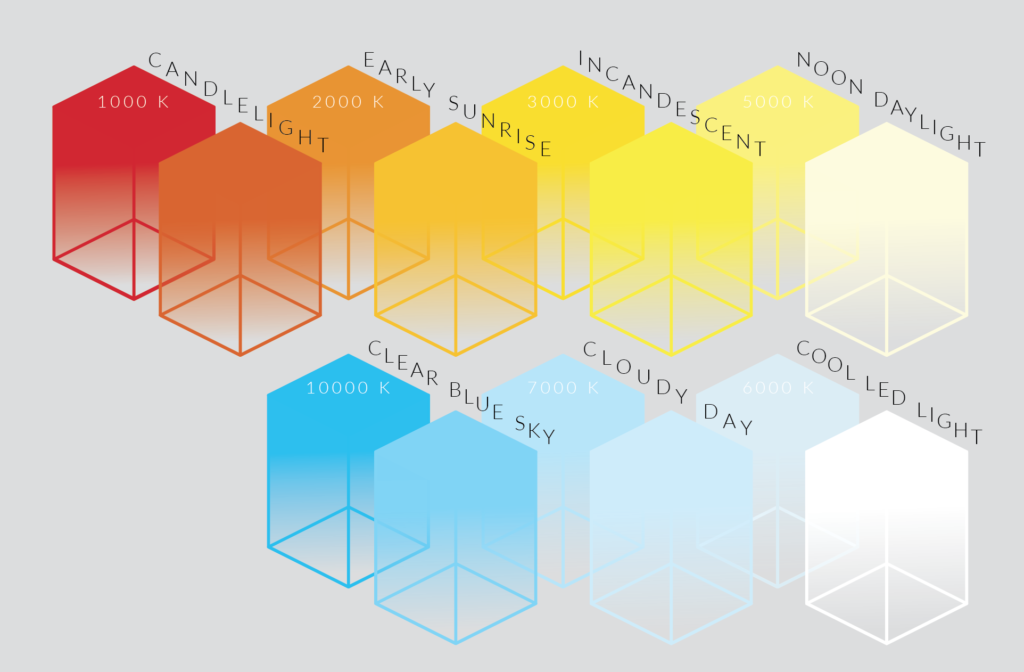
A Deeper Look at CRI in Commercial Applications
A CRI of 90 means that the artificial light source is replicating roughly 90 percent of the visible color spectrum that the sun would produce on the same color.
Commercial applications that may require 90+ CRI lighting include art galleries, museums, retail outlets, hospitality and medical buildings.
In the home, lighting with a high CRI rating may be used in areas where people apply makeup, or for work where color is important like design and construction.
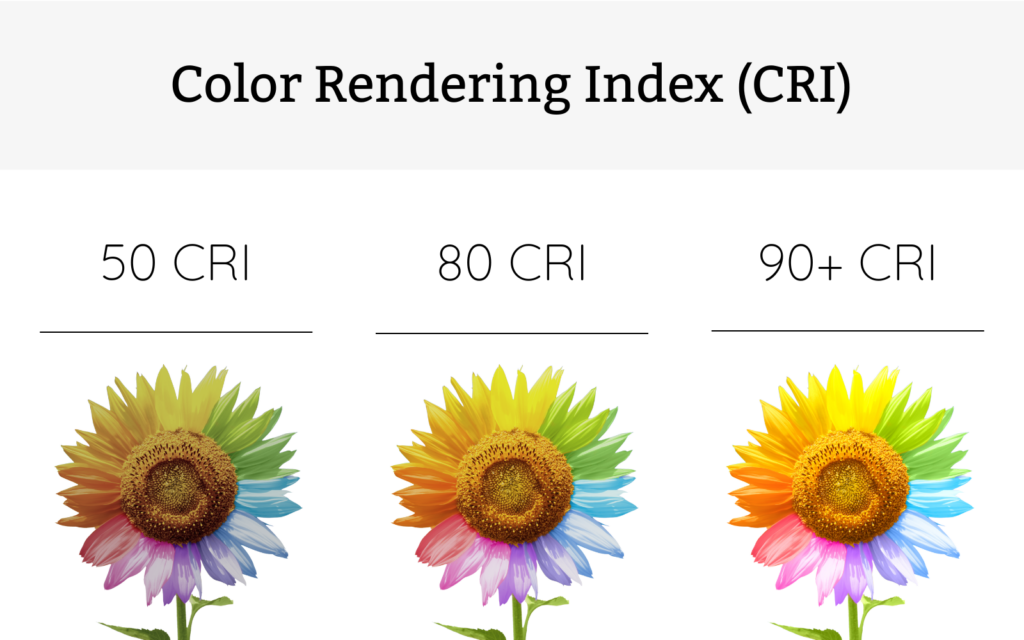
How is CRI Measured?
The traditional CRI metric is based on a set of eight reference colors (see figure Color Rendering Scales below). Formal measurement of CRI is done in a lighting laboratory, most often as part of the larger process of testing and certifying a product.
The light source being tested is directed onto the reference colors and its color rendering performance is measured by a spectrophotometer, a spectrophotometer is an instrument that measures the amount of photons (the intensity of light) absorbed after it passes through sample solution. Each of the eight results is then compared with the benchmark (the reference colors as measured in sunlight).
For each of the eight colors, the difference in performance between the benchmark and the tested light source is calculated and given as a percentage. The eight values are then averaged to give an overall CRI rating.
Light Sources and CRI
Incandescent and halogen light sources both get high (90+) CRI ratings. The light from fluorescent and other discharge lamps is composed of a limited range of wavelengths therefore these light sources do not get a high CRI rating.
Red tones are not well-represented in the standard Color Rendering Index. Accordingly, a light source that renders reds poorly may still have a high CRI rating; and because a CRI rating averages eight colors, there may be slight performance variation across the spectrum, and a product may still receive a high CRI rating.
It is widely acknowledged that the eight-color CRI metric is limited. So, in recent years, an extended CRI has been used with 15 reference colors.
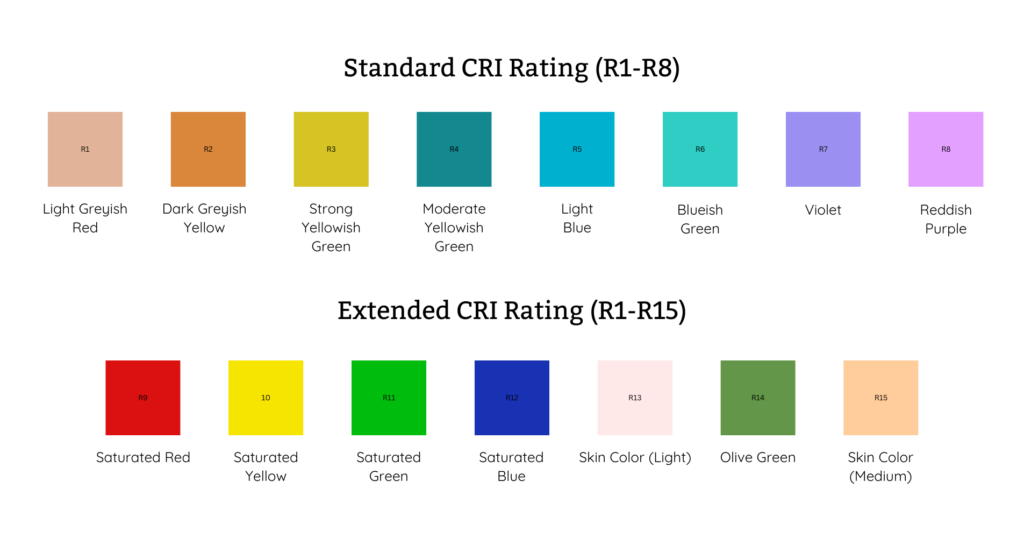
What CRI Can’t Do
- CRI can’t tell us the brightness of a light source
- CRI can’t tell us the color temperature
- CRI can’t tell us the spectral distribution of a light source, i.e. which wavelengths have been mixed to make up the color of the light
TM-30-15: A New Color Rendering Standard is Emerging
However, a more modern standard is replacing CRI as the method of choice for assessing the color rendering performance of a light source. TM-30-15, a method created by the Illumination Engineering Society (IES), has a comprehensive set of 99 reference colors. The new standard also quantifies color saturation using the Gamut Index. Additionally, TM-30-15 also gauges how closely color appearance of objects reproduce (render) compared to the color appearance of objects under a reference light using the Color Fidelity Index.
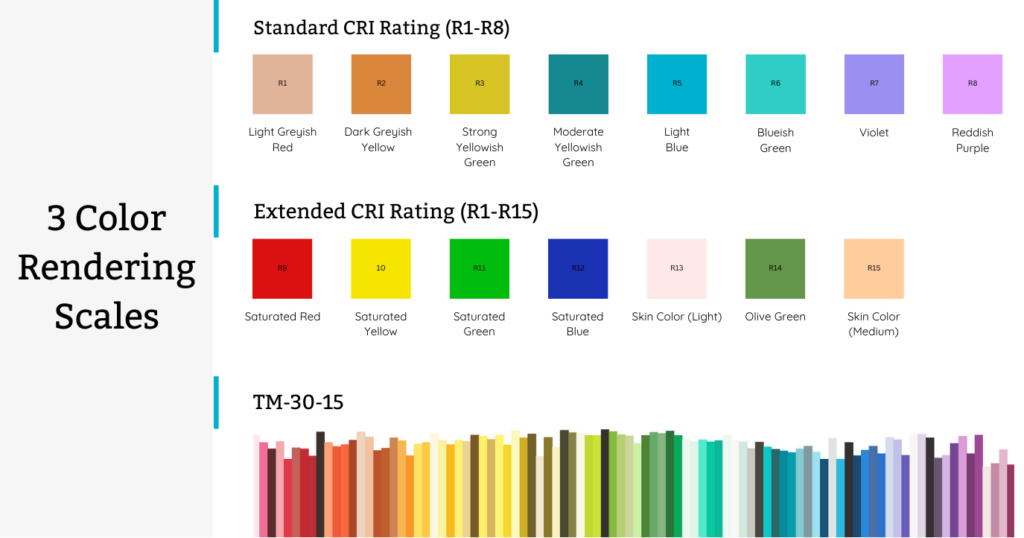
Practical Application of CRI
In any given space, the CRI of a light source can have a profound impact on how the paint looks and how the furniture looks.
Choosing lighting with a high CRI can be beneficial. Recent research shows both light and color affect how comfortable people feel in a space.
In some ways, CRI has become less important now that LED products are available with pre-selected or tunable wavelengths of light. Retailers, for example, can specify LED lighting with the right mix of colors for displaying diamonds.
Whether measured by CRI or by the modern standard, TM-30-15, color quality matters.
Alcon Lighting creative director and co-founder David Hakimi works to improve lighting through research, development and education. David strives for efficiency in lighting, affording architects, lighting designers and engineers the ability to maximize LED lighting design and application. David is a graduate of the University of California, Los Angeles, where he received a Bachelors in history. David also studied lighting design at IES in Los Angeles. He traces his and Alcon Lighting’s commitment to innovation, accountability, quality and value to lessons learned from his father, Mike Hakimi, a lighting craftsman, salesman and consultant in Southern California for more than four decades. Today’s lighting for commercial use requires a deep, complete understanding of smart lighting systems and controls. David takes pride in his lighting, energy controls and design knowledge. He is driven by the desire to share his insights into lighting specification and application. This quest to share his knowledge was the impetus for David to create Insights, Alcon Lighting’s blog and resource center for helping the reader understand lighting and its application to space.

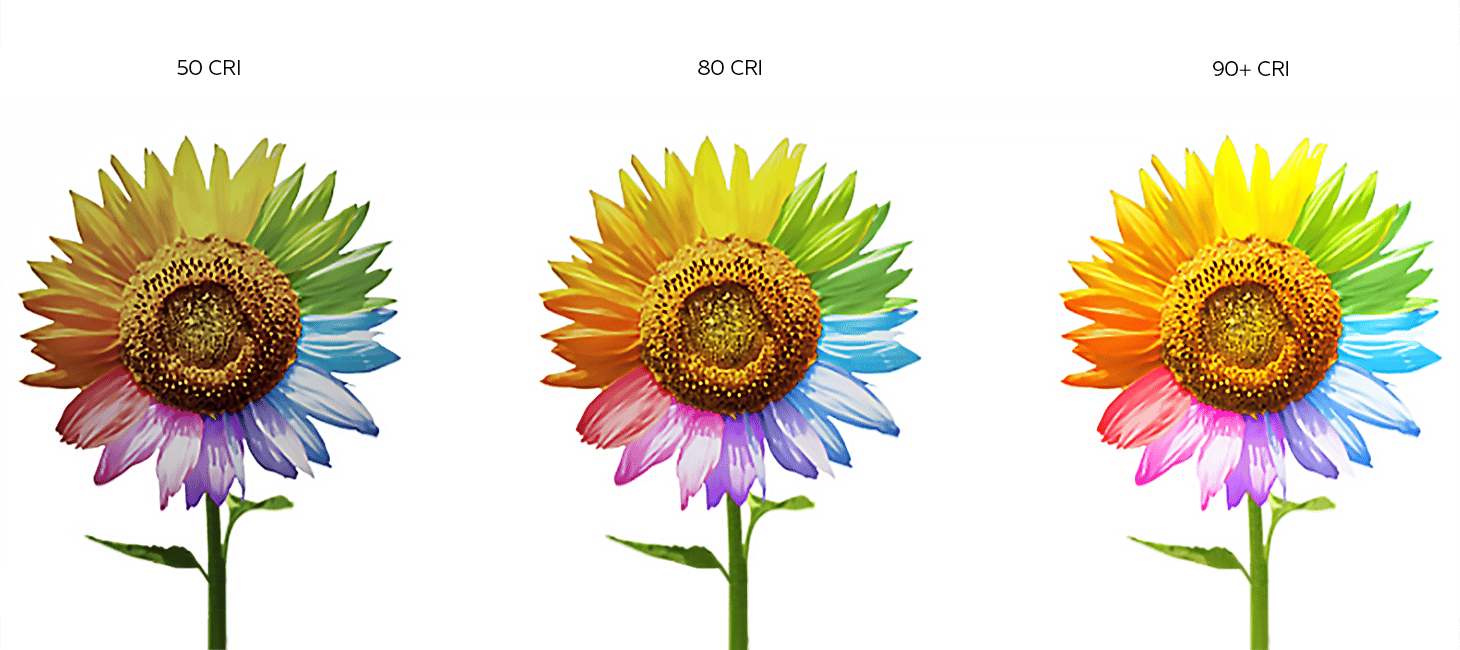




[…] C.R.I. is a quantitative metric of the ability of an artificial light source (i.e. LED, Fluorescent, Halogen, Incandescent, etc.) to accurately reveal the colors of the subject being lit in comparison to a natural light source, the sun. Sunlight, the standard for C.R.I., is considered to most accurately reveal the… Read more »
[…] lighting is very important for displaying or producing art. Sunlight has the highest CRI (Color Rendering Index). CRI is the measurement of a light source’s capacity to accurately reveal the colors of […]
[…] lighting is essential for displaying or producing artwork. Daylight has the very best CRI (Color Rendering Index). CRI is the measurement of a light-weight supply’s capability to precisely reveal the colours of […]
[…] lighting is very important for displaying or producing art. Sunlight has the highest CRI (Color Rendering Index). CRI is the measurement of a light source’s capacity to accurately reveal the colors of various […]
[…] in your office possess some of the health and feel-good benefits of sunlight? You can, with high-CRI LED lighting and by designing a floor plan to include several […]